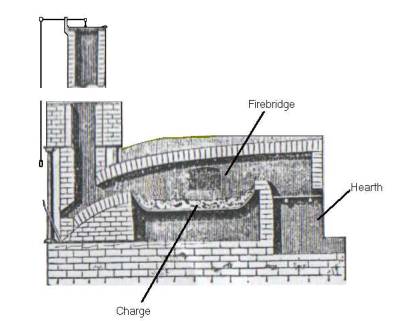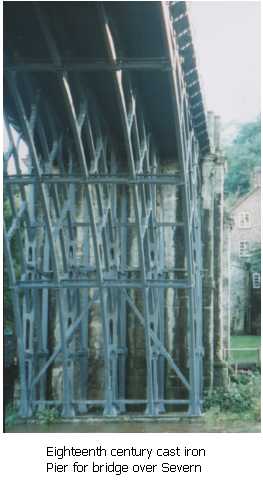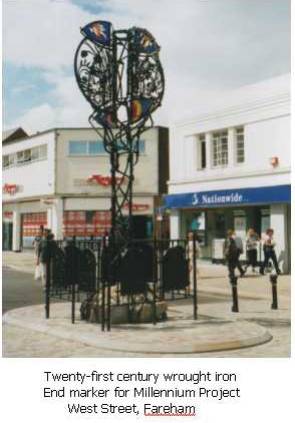 |
 |
Henry Cort Inventor - Creator of puddled iron - Father of iron trade |
 |
 |
| This page is part of a website based on the life and achievements of eighteenth-century inventor Henry Cort. The creator and owner of the site was Eric Alexander who passed away. The site is now hosted by Geneagraphie.com Please contact us with any comments or queries. |
- Homepage
- Life of Henry Cort
- Cort's processes in iron manufacture
- Cort's patents
- Refutation of allegations of conspiracies against Cort
- Adam Jellicoe's death
- Henry Cort's birth
- A navy agent's business
- Early life of John Becher
- Attwick & Burges families
- "Cortship" of second wife
- Thomas Morgan
- Henry Cort's hoops contract
- 1856 Accolade
- Generosity of friends 1789-94
- James Watson
- Illness of Cort's son
- Main sources of information
- Contemporary sources
- Navy sources
- Chancery files
- Publications about Cort
- Assessment of Cort's character
- Images of Henry Cort
Impeach-tranferred to 05
- Parliamentary inquiry 1811-2
- The furore of the 1850s
- Society of Arts
- Cort's first marriage
- Henry Cort's children
- Cort family pensions
- Henry Cort's Hertfordshire property
- 1791 signatories
- Guiana and the Cort-Gladstone connection
- Cort's twilight years
- Memorials to Henry Cort
- Smelting of iron
- Fining before Cort
- Shropshire & Staffordshire ironmasters
- Cumbrians: Wilkinson etc
- Early works at Merthyr Tydfil
- The Crowley business
- London ironmongers
- Scottish iron
- Cort's promotion efforts 1783-6
- Later Merthyr connections
- Puddling after Henry Cort
- Gosport in Cort's day
- Gosport administration
- Gosport worthies
- The Amherst-Porter network
- James Hackman, murderer
- Samuel Marshall
- Samuel Jellicoe's legacy
- Links with Titchfield
- Links with Fareham
- Fact, error and conjecture
- 18th century politics
- Law in the 18th century
- 18th century finance
- Religion and sexual mores
- Calendar change of 1752
- Shelburne, Parry and associates
- John Becher's family
- The Becher-Thackeray lineage
- Thomas Lyttelton: a fantastic narrative
- Eighteenth-century London
- Abolition and the Corts
- The Burges will tangle
- Navy connections
- Navy agent's business
- Cort's clients
- Ships' pursers
- History of Adam Jellicoe
- Dundas & Trotter
- Cort's navy office associates
- Toulmin & other agents
- Sandwich & Middleton
- The Arethusa
- John Becher's war
- Thomas Morgan's war
- The 1782 Jamaica convoy
- Sinking of the Royal George
- Visitors 2006-2009
- Developement of the site 2006-2009
- Daniel Guion and family
- Extremely bad academic work and extremely bad journalism
****************
|
|
CORT'S PROCESSES IN IRON MANUFACTURE
|
In 1800, Britain was leading the World into a new industrial age. A major factor in the country's success was the technical revolution which had transformed its iron industry during the preceding century. Two names stand out in this story - the Shropshire ironmaster Abraham Darby I, and Henry Cort. From John Challen, "The Impact of Henry Cort" in Eric Alexander (ed.), West Street Trail. |
In a blast furnace, a blast of air is passed through a charge of iron ore, limestone and some form of carbon. This "smelting" process is a chemical change: the molten iron produced is tapped from the furnace as "pig" iron.
Because of impurities, pig iron cannot be forged. But it has a low melting point, so that it can be cast.
Since Cort's day there has been a tendency to classify this iron chemically: pig iron is nowadays regarded as a form of "cast iron".
The purer type of iron, used by blacksmiths in Cort's day, is similarly called "wrought iron", whether or not it has been forged.
The process of converting cast to wrought iron involves removing carbon impurity, and is known as fining: Cort's "puddling" process is an example. Thus the only published biography of Cort calls him "The Great Finer".
Steel, incidentally, is less pure than wrought iron, but purer than cast iron. It can be both forged and cast. But in Cort's day there was no cheap process for making steel on a large scale.
In the early days of ironmaking, before blast furnaces came into use, the smelting of iron ore in "bloomeries" produced wrought iron: fining was not necessary. In the first blast furnaces, charcoal was the form of carbon used for smelting. Charcoal was also used as fuel in fineries.
In the eighteenth century, there were worries in Britain about the consumption of wood in the production of charcoal for smelting and fining: the Navy preferred its wrought iron to be imported rather than British-made. Ironmasters found they could smelt with coke instead of charcoal, but had problems using coke or coal as fuel for fining.
When Cort started his experiments, the favourite fining method was "potting and stamping" using coal as fuel: it was a complex and expensive process, and the wrought iron produced was of low quality for forging.
It was, however, improved at the same time that Cort was developing his process, leading to an expansion in iron production which was later falsely assumed to be due to large-scale adoption of puddling.
The puddling furnace is an adaptation of a type already used for casting iron, known as a reverberatory or air furnace. Its features are a hearth where the fuel is burnt, a firebridge where the charge is fined, and a chimney.
 The sectional diagram shows the hearth on the right, the chimney on the left. At the front (the direction from which we are looking) are two doors. One is used to load fuel to the hearth, the other to load the charge into the firebridge. The firebridge door has a small covered aperture, through which the stirring pole can be inserted.
The sectional diagram shows the hearth on the right, the chimney on the left. At the front (the direction from which we are looking) are two doors. One is used to load fuel to the hearth, the other to load the charge into the firebridge. The firebridge door has a small covered aperture, through which the stirring pole can be inserted.
In Cort's "dry" puddling process, cast or "pig" iron is loaded into the firebridge. The hot gases melt the iron, then start to remove the impurity.
As the iron becomes purer its melting point goes up and it starts to solidify.
The purpose of stirring is to remove the coating of solid iron, exposing more molten iron to the action of the gas. This goes on for an hour or so before fining is complete: very hard work for the puddler who does the stirring.
Cort obtained his starting material from the Navy as iron ballast, cast iron items no longer needed. These had originally been made from charcoal-smelted pig. When Cort's process was tried with coke-smelted pig, it worked at first: but impurities absent in charcoal-smelted iron built up in the furnace and spoiled its performance.
It was years before ironmasters in South Wales found a way round this problem. Their main improvement was preliminary refining of the iron by heating, a process that had already been used in the "potting and stamping" process.
Crawshay's other contribution was to maximise throughput by feeding the output of four puddling furnaces in turn to a single shingling hammer: the puddling operation took about four times as long as shingling per charge. Initially he sent the hammered "blooms" to Fontley or Rotherhithe for rolling.
When Crawshay installed his own rolling mill, he found it could deal with the output from two shingling hammers. He therefore operated with eight puddling furnaces of the twelve installed.
In an improvement, discovered by Joseph Hall in 1816 and introduced after his Tipton works were set up. iron coated with oxide was added to the charge. The presence of oxide helped to purify the charge, and Hall found he did not need to refine the iron first. This variant of Cort's process was called wet puddling, but the shape of the furnace remained the same.
|
RELATED TOPICS Cort's promotion efforts 1783-6 Shropshire and Staffordshire ironmasters |
 |
 |
The pages on this site are copied from the original site of Eric Alexander (henrycort.net) with his allowance.
Eric passed away abt 2012
If you use/copy information from this site, please include a link to the page where you found the information.
